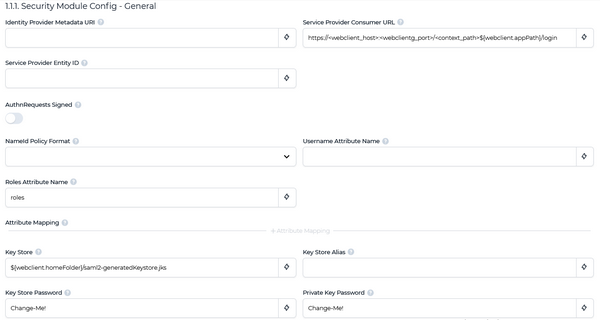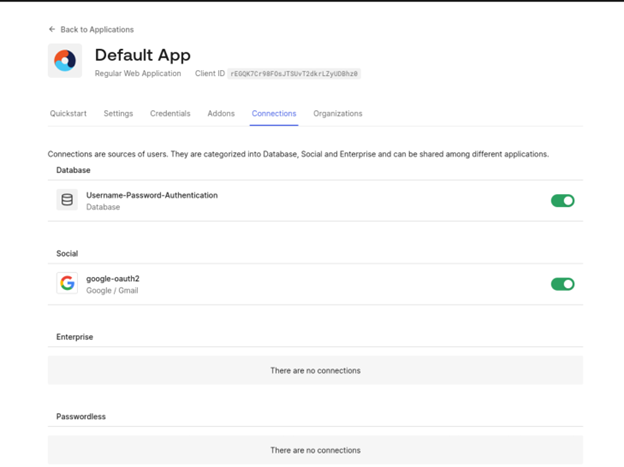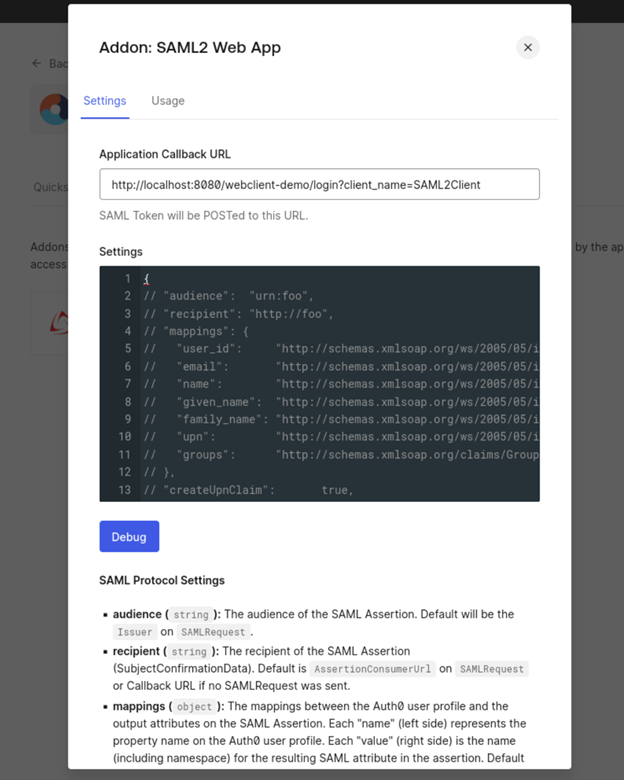SAML2 authentication
SAML2 is an XML-based protocol that uses security tokens containing assertions to pass information about a principal (usually an end user) between a SAML authority, named an Identity Provider, and a SAML consumer, named a Service Provider. SAML2 enables web-based, cross-domain single sign-on (SSO), which helps reduce the administrative overhead of distributing multiple authentication tokens to the user.
In order to make WebClient use SAML2:
1. click on the "+" below Security Module Class Path
2. select the value "${webclient.rootDir}/security/saml2/*" from the list
3. click on the "Apply" button
The list of options under Security Module will change from
o NONE
o EMBEDDED
to
o NONE
o EMBEDDED
o org.webswing.security.modules.saml2.Saml2SecurityModule
4. set the Security Module Name field to "org.webswing.security.modules.saml2.Saml2SecurityModule".
A new section named Security Module Config - General appears

Fill the fields as follows:
Identity Provider Metadata URI | The name Id format to use for the subject |
Service Provider Consumer URL | Name of SAML2 attribute defining the username. If empty, NameId value will be used |
Service Provider Entity ID | Identitficator used when registering WebClient with Idp |
AuthnRequests Signed | Indicates whether the Idp expects signed AuthnRequests. Idp needs the public key stored in Key store configured below to validate this signature |
NameId Policy Format | The name Id format to use for the subject |
Username Attribute Name | Name of SAML2 attribute defining the username. If empty, NameId value will be used. |
Roles Attribute Name | Name of SAML2 attribute that contains list of roles. Leave empty if not required |
Attribute Mapping | List of user attributes that will be stored in the session token cookie. Cookie size is limited to 4096 characters |
Key Store | PKCS#12 or JKS Key Store file containing the private key used to decrypt the assertions returned by server. If file does not exist it will be generated |
Key Store Alias | Key alias the private key is stored under |
Key Store Password | Password to access the key store |
Private Key Password | Password to access the private key |
Example with auth0
SAML2 integration works well with auth0 provider (https://auth0.com/).
To configure an auth0 application, create a new Application, as shown below.
In this document, we’re assuming WebClient is running on localhost using port 8080, and the webapp being created is called webclient-demo.

From the pop-up, choose Regular Web Applications and click Create.
Configure the application settings (in the Settings tab) as follows, changing settings URL, port, and WebClient app name to reflect the real application:
Allowed Callback URLs | http://localhost:8080/webclient-demo/login?client_name=SAML2Client |
Allowed Web Origins | http://localhost:8080/webclient-demo |
In the Addons enable SAML2 WebApp

In the Connections tab set the desired connections

Save the changes and the configuration is completed.
Clicking in the Addon – Saml2 Web App button will provide the information needed to configure WebClient.


In Webclient, configure the following settings:
In the Web Config section:
Security Module Class Path: | ${webclient.rootDir}/api/saml2/*.jar |
Security Module Name: | org.webswing.security.modules.saml2.Saml2SecurityModule |
Identity Provider Metadata URI: | use the link provided in the Auth0 Addon: SAML2 Web App dialog in the Usage tab, in the Identity Provider Metadata’s Download link |
Service Provider Consumer URL: | http://localhost:8080/webclient-demo/login?client_name=SAML2Client |
Service Provider Entity ID | copy the link in the Identity Provider Login URL setting on the Addon: SAML2 Web App Usage dialog. |
You’re now ready to test the credentials.
Our suggestion in to open the browser using a Private Window when testing, to prevent the browser from caching the authentication.